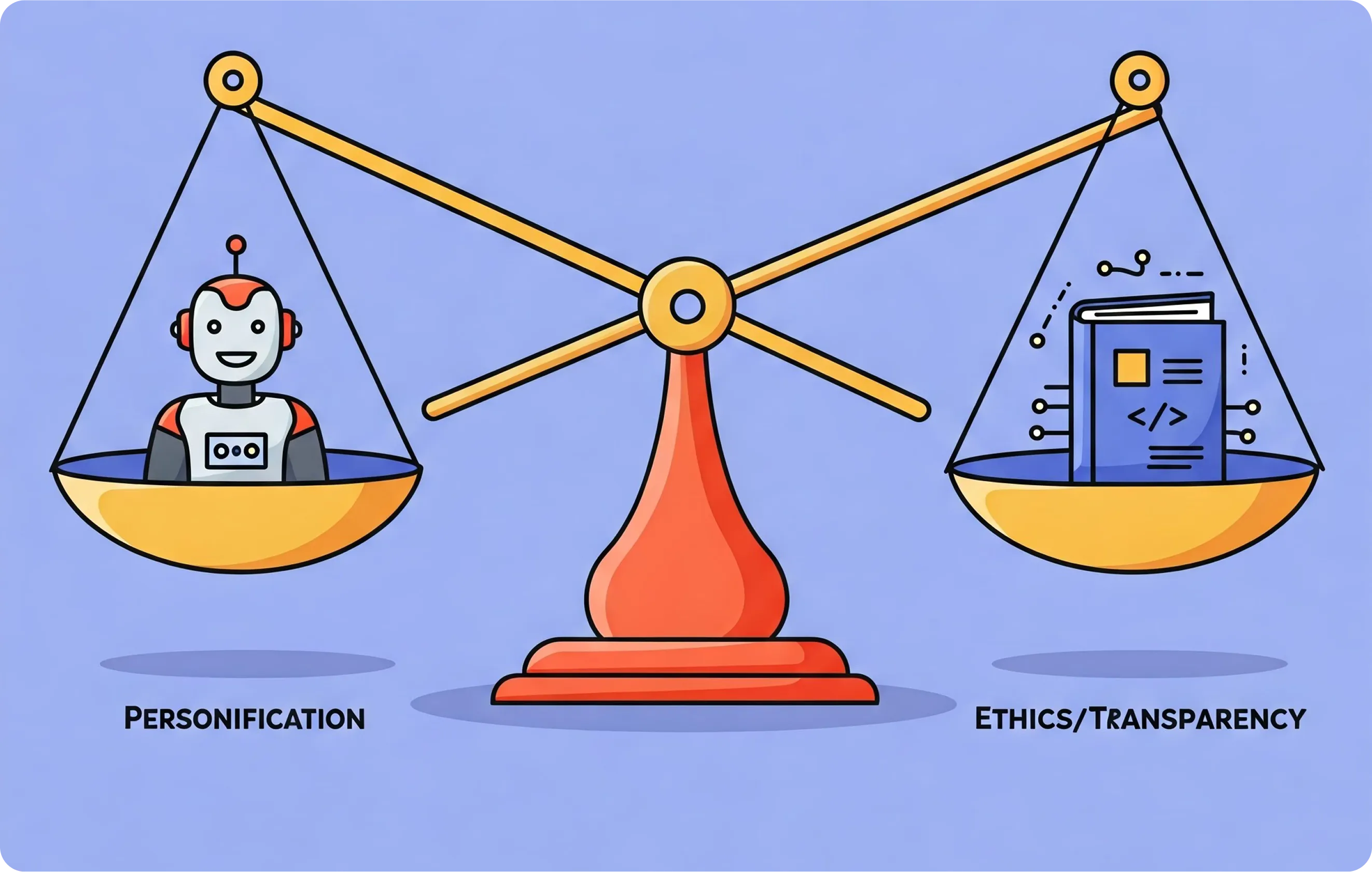Table of Contents
Bridging the Gap Between AI and Users: How Leveraging UX Principles Can Improve AI Products
Bridging the Gap Between AI and Users: How Leveraging UX Principles Can Improve AI Products
As the tech landscape evolves rapidly, artificial intelligence is becoming increasingly prevalent, driving automation and personalization across industries. However, as AI systems become more sophisticated, there's a growing concern that the human element is being lost in the process. According to McKinsey, AI adoption is on the rise, but without proper user-centered design, AI experiences can feel disconnected, robotic, or even invasive. By reintroducing empathy and human-centric principles, UX can ensure that AI recommendations are not just effective, but also intuitive, ethical, and deeply relevant to users’ needs.

1.Integrating User-Centered Design in Personalized AI Recommendations
A study by Epsilon reveals that 80% of consumers are more likely to make a purchase when brands offer personalized experiences. AI recommendations should focus on the user’s goals, preferences, and behaviors to enhance individual preferences and personalization.
By applying user-centered design principles, UX to AI suggestions ensures that the suggestions are relevant, intuitive, easy to navigate, reduces cognitive load and enhances overall satisfaction. This approach tailors the interface based on user data while keeping the user’s journey at the forefront of the design.

2. Encouraging Discovery While Maintaining Personalization
Excessive personalization can trap users in a "filter bubble," leading to fatigue from seeing repetitive content. While AI effectively learns from past behaviors, UX design can enhance this by integrating emotional and attitudinal insights to introduce new, relevant content. Understanding how users feel about their experience helps expand their horizons, preventing stagnation.
A Pew Research Center survey found that while AI personalization is valued, many users fear becoming overly focused on past behaviors, limiting opportunities for fresh content. This reinforces the need for UX approaches that encourage exploration and minimize repetitive loops.
For instance, there was a case where on an e-commerce site, imagine a scenario where there is low engagement despite of personalized recommendation this might be due to past behaviour recommendation exhaustion and understand users current emotions and attitudes can help in further enhancing the experience. Similarly, in another case in research tools, UX can prompt users to explore diverse topics, expanding their intellectual discovery. Users appreciate AI systems that blend personalized recommendations with exploratory suggestions, promoting both relevance and novelty

3. Ensuring Ethical and Transparent AI Through UX Design
While personalized AI recommendations with UX can enhance user experience, they often raise ethical and transparency concerns. Users are increasingly worried about AI’s omnipresence, data collection, and potential privacy invasions. Ethical considerations are crucial in ensuring that AI systems operate fairly and accountably. According to a Gartner report, ethical AI must be transparent and accountable, with a strong focus on AI governance to mitigate risks like bias and lack of explainability in decision-making. By addressing these concerns, UX design can help build trust, ensuring AI-driven interactions are both responsible and respectful of user privacy.
UX design can address these concerns by making AI processes transparent and empowering users with clear, accessible information about how their data is being used. By offering users control over their preferences and providing explanations for AI decisions, UX can help demystify AI and build trust, ensuring that recommendations feel both ethical and respectful of user privacy.
By 2028, companies that combine AI with strong user experience principles will see significantly higher user engagement and retention and those that fail to integrate human-centered UX into their AI-driven solutions risk falling behind.
Space Inventive can guide you in future-proofing your products, ensuring that AI not only meets users' expectations but also enhances their daily experiences in a meaningful way. At Space Inventive, we have provided AI integrated custom healthcare products with the help of cutting-edge user centered principles. Our team helps businesses create intuitive, ethical, and transparent personalized experiences that drive user engagement and satisfaction.
With expertise in both AI and UX we ensure that your AI recommendations are not only tailored to the user’s needs but also seamlessly fit into your customers’ daily lives, across all platforms.

Read More

By Rohini Vasudhevan
UI/UX Designer
Read other blogs
Your go-to resource for IT knowledge. Explore our blog for practical advice and industry updates.
Discover valuable insights and expert advice.
Uncover valuable insights and stay ahead of the curve by subscribing to our newsletter.

Download Our Latest Industry Report
To know more insights!























